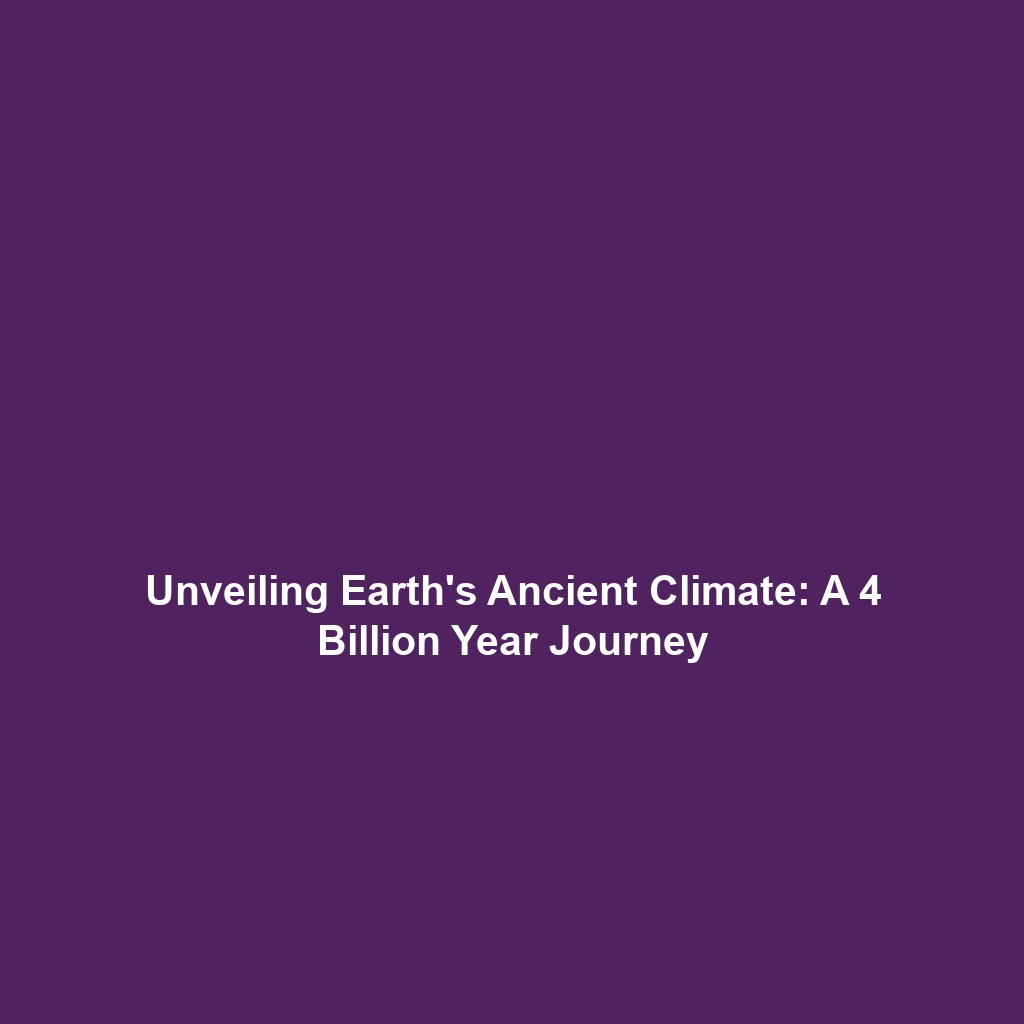Earth’s Climate During Its Earliest 4 Billion Years
Understanding Earth’s climate during its earliest 4 billion years is crucial for piecing together the formative stages of our planet’s environmental history. This period holds significant implications for comprehending Climate History, as it shaped the conditions necessary for the evolution of life and the atmosphere we experience today. By exploring the climatic conditions of this ancient era, we can gain insights into the forces that have driven Earth’s climate through millennia.
Key Concepts of Earth’s Early Climate
The study of Earth’s climate during its first 4 billion years reveals several major concepts integral to Climate History:
- Hadean Eon: The earliest phase of Earth’s history, characterized by a molten surface and a lack of stable crust.
- Atmospheric Development: The evolution of the atmosphere from a toxic mixture to one that could support life.
- Water Formation: The role of volcanic activity and comet impacts in creating Earth’s oceans.
- Climate Stability: How ancient climates influenced the geological and biological processes on Earth.
Applications and Real-World Uses
The significance of studying Earth’s climate during its earliest 4 billion years extends into various real-world applications, particularly in the context of Climate History. Some notable uses include:
- Climate Models: Enhancing predictive models based on ancient climate data to forecast future climate changes.
- Paleoenvironmental Studies: Informing the understanding of early Earth conditions for research in astrobiology.
- Geological Surveys: Applying knowledge from early climatic conditions to locate mineral deposits and resources.
Current Challenges in Researching Early Climate
Studying Earth’s climate during its earliest 4 billion years poses several challenges that researchers must overcome:
- Scarcity of direct geological records from this time period.
- Difficulties in accurately modeling climatic conditions due to the complexity of ancient data.
- Interpretation of indirect evidence, such as isotopic ratios, which can be ambiguous.
Future Research and Innovations
Looking ahead, several innovative research avenues are exploring Earth’s climate during its earliest 4 billion years:
- Advanced Climate Modeling: Development of next-gen simulations that incorporate ancient data to improve predictions.
- Geochemical Techniques: New methods for analyzing rock samples and their isotopes to gather more precise climatic historical data.
- Space Missions: Investigating other planetary bodies to compare early climates and understand potential habitability.
Conclusion
In summary, the exploration of Earth’s climate during its earliest 4 billion years is vital to building a cohesive narrative within Climate History. It sheds light on the environmental processes that have shaped our planet and continues to influence current climate studies. For those interested in delving deeper into this topic, consider exploring internal links such as Future Research Directions or Applications in Current Studies.
